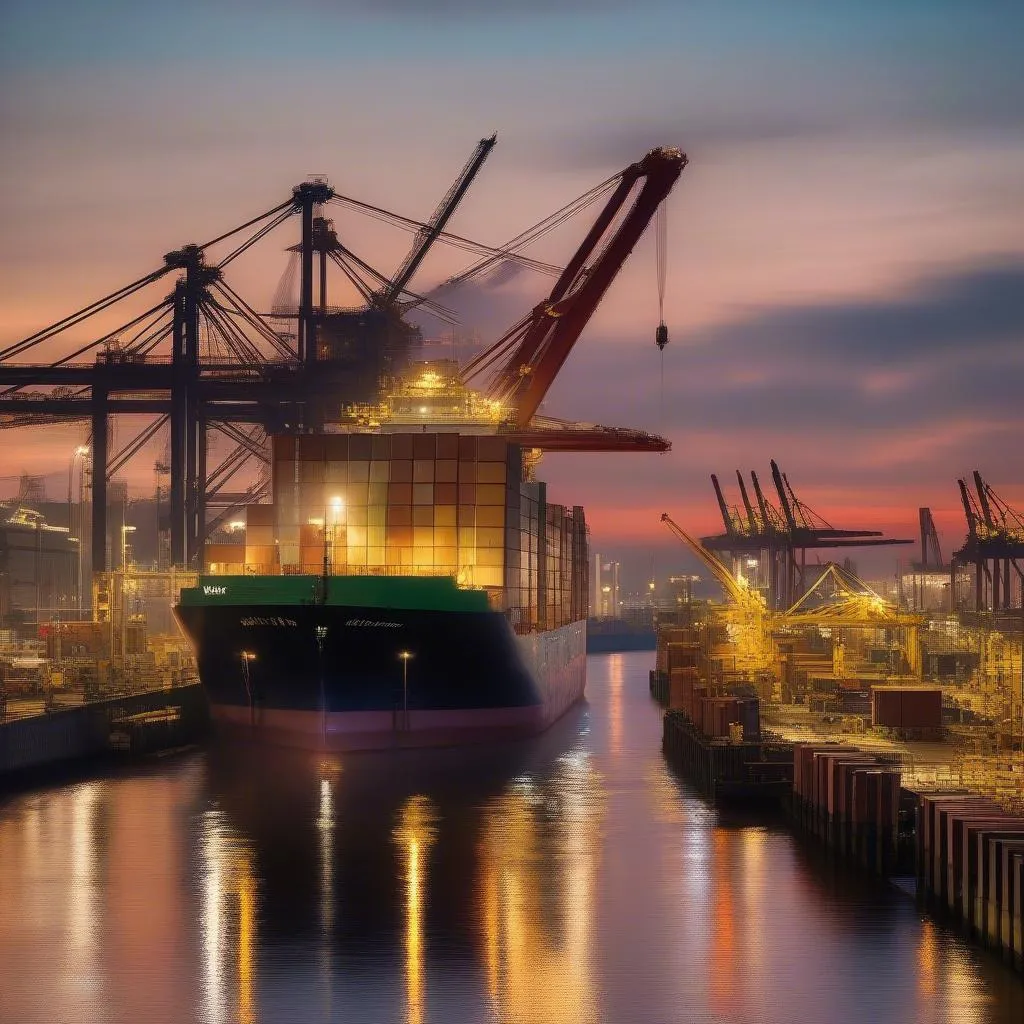Have you ever wondered how the goods we use every day arrive on our shores? From the coffee beans in your morning cup to the steel used to build our cities, much of it travels across vast oceans on the backs of giants – bulk carriers. These incredible vessels are the unsung heroes of global trade, silently circumnavigating the globe to keep our world running. Join us as we embark on a virtual voyage, tracing the potential route of a bulk carrier as it navigates the world’s oceans, encountering diverse cultures, bustling ports, and breathtaking landscapes along the way.
Charting the Course: A Global Itinerary
A bulk carrier’s journey is rarely direct, dictated by the ever-changing demands of the global market. Let’s imagine a hypothetical itinerary, starting from the bustling port of Rotterdam in the Netherlands.
1. Rotterdam, Netherlands: Our journey begins with the loading of manufactured goods, perhaps sophisticated machinery destined for infrastructure projects in Asia. Rotterdam, with its strategic location and efficient infrastructure, serves as a vital gateway to Europe.
2. Suez Canal, Egypt: Our bulk carrier joins a convoy of ships navigating the historic Suez Canal, a man-made marvel that slices through the desert and connects the Mediterranean Sea to the Red Sea. The passage offers a glimpse into the rich history of maritime trade and engineering prowess.
3. Singapore: After crossing the Indian Ocean, our vessel arrives in Singapore, a global hub for shipping and logistics. Here, it might unload part of its cargo and take on new goods, perhaps electronics or textiles destined for the Americas.
4. Port Hedland, Australia: Next, our journey takes us to the remote Pilbara region of Western Australia, home to vast iron ore mines. Port Hedland, one of the world’s largest bulk export terminals, is where the ship loads up on iron ore, a crucial ingredient in steel production.
5. Panama Canal, Panama: After traversing the Pacific Ocean, our bulk carrier reaches another engineering marvel, the Panama Canal. This intricate system of locks raises and lowers ships, allowing them to bypass the treacherous Drake Passage and shorten their journey significantly.
6. New Orleans, USA: Our vessel sails into the Gulf of Mexico, reaching New Orleans, a vibrant city known for its jazz music and rich cultural heritage. Here, the iron ore is unloaded, destined for steel mills that will transform it into countless products.
7. Back to Rotterdam: Finally, our bulk carrier completes its circumnavigation, returning to Rotterdam with a fresh cargo, perhaps soybeans from the Americas or coal from Asia, ready to begin another epic voyage.
 Rotterdam Harbor
Rotterdam Harbor
The Life of a Seafarer: Challenges and Rewards
Life on board a bulk carrier is far from a luxurious cruise. Seafarers work long hours in demanding conditions, facing isolation, rough seas, and the ever-present danger of piracy.
“It’s a tough job, no doubt,” says Captain Michael Olsen, a seasoned bulk carrier captain with over 20 years of experience. “But it’s also incredibly rewarding. We get to see the world, experience different cultures, and play a vital role in the global economy.”
Feng Shui and the Journey: Seeking Harmony on the High Seas
Interestingly, some seafarers look to ancient practices like Feng Shui to bring balance and good fortune to their voyages.
“Just like a home, a ship is a living space,” explains Feng Shui consultant, Li Wei. “By arranging certain elements on board, we can promote harmony, good health, and a safe journey.”
 Ship Interior
Ship Interior
Planning Your Own Adventure: Exploring the World of Maritime Travel
While experiencing life on a bulk carrier might not be for everyone, there are countless ways to satisfy your wanderlust and explore the world’s oceans. From luxury cruises to adventurous sailing expeditions, the possibilities are endless.
Here are some resources to get you started:
- Travelcar.edu.vn: Your one-stop shop for travel information, tips, and inspiration.
- International Maritime Organization (IMO): Provides information on maritime safety and security regulations.
- Cruise Critic: Offers reviews and information on various cruise lines and itineraries.
FAQs about Bulk Carrier Travel
1. How long does it take a bulk carrier to travel around the world?
The duration of a circumnavigation varies depending on the specific route, weather conditions, and port calls. On average, it takes around 3-4 months.
2. What are the biggest challenges faced by bulk carrier crews?
Isolation, fatigue, harsh weather, and piracy are some of the challenges faced by seafarers.
3. What are the environmental impacts of bulk carrier shipping?
The shipping industry is making strides in reducing its environmental impact through measures like using cleaner fuels and improving energy efficiency. However, challenges remain in areas like ballast water management and emissions reduction.
Conclusion: A World Connected by Sea
As our virtual journey concludes, we gain a deeper appreciation for the intricate web of global trade and the silent giants that keep it flowing. From the bustling ports to the open ocean, a bulk carrier’s journey is a testament to human ingenuity, the power of globalization, and the enduring allure of the sea.
What are your thoughts on the crucial role of bulk carriers in our world? Share your comments below and let us know if you’d like to explore other fascinating aspects of maritime travel!